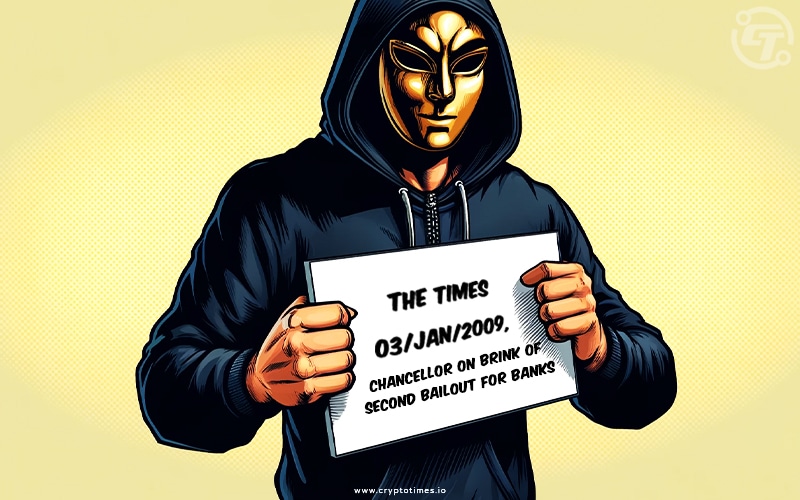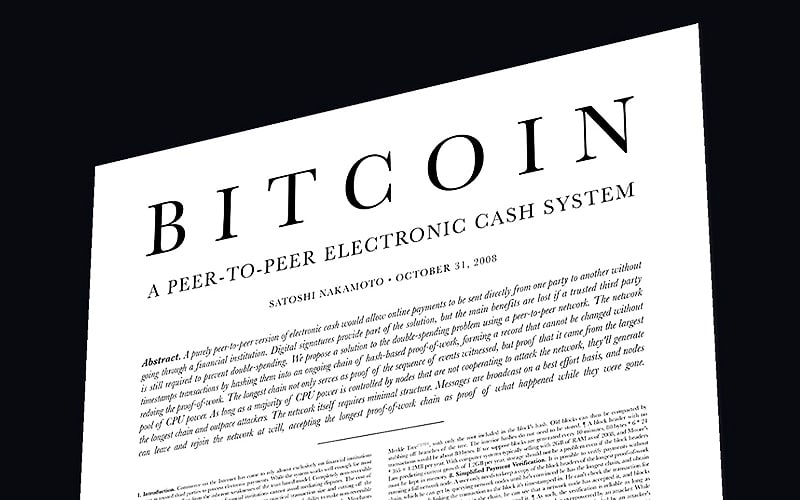A teaser trailer for an HBO documentary titled “Money Electric: The Bitcoin Mystery”, set to be released on October 8, has again ignited the debate around the identity of Satoshi Nakamoto- the fabled creator of Bitcoin and blockchain technology.
According to the makers of the HBO documentary, the identity of Nakamoto will be revealed on October 8 when it will be premiered worldwide, much to the excitement of the crypto community. The identity of Satoshi Nakamoto has been kept a secret for the past 16 years as many have tried to claim credit for the creation of Bitcoin but it has not been proved yet exactly who is the real creator.
In this Crypto Times exclusive article, we will narrate the journey of Satoshi Nakamoto and why the idea of an anonymous Bitcoin creator has remained popular for all these years.
Back on January 9, 2009, an unknown person, or persons or an entity named Satoshi Nakamoto released 0.1 version of Bitcoin software on SourceForge and launched the genesis block of Blockchain.
Nakamoto embedded a headline from UK-based ‘The Times’ newspaper dated January 3, 2009 as a timestamp in the coin base transaction of the genesis block.
The headline read, “The Times 03/Jan/2009 Chancellor on brink of second bailout for banks”. The headline was not just a timestamp but a sly attack on the existing banking structure and its instabilities.

Since then, it’s been over 15 years, and the finance world is now taken over by a new terminology- cryptocurrency market- a $2.81 trillion valued ecosystem, which is touted to be the future of money.
Bitcoin, which was originally valued as next to nothing, is currently priced at US $70,000 and trade analysts predict that it might cross the threshold of US $150,000 post the halving event of 2024.

It was Nakamoto’s idea to introduce an algorithm in the blockchain software which resulted in halving of bitcoin rewards for miners after completion of every 2,10,000 blocks.
However, what has been kept secret for the past 15 years is the identity of this person Satoshi Nakamoto.
If you search on the internet, the name throws up wild speculations about the identity of Nakamoto.
Some claim the person to be of Japanese origin, some contend it was a CIA’s ‘black op ‘or work of the illuminati group while there are also some who believe it was the bigfoot!!

Contenders for the pseudonym are many; some self-claimed and some claimed to be by conspiracy theorists and investigative journalists, but no one has been able to provide satisfactory evidence to trace Nakamoto.
Failed attempts to trace Satoshi Nakamoto
The name Satoshi Nakamoto is Japanese, and it literally translates to wisdom (Satoshi) and the one who lives (Nakamoto). While there are other interpretations of this name, bitcoin enthusiasts take this definition as the most widely accepted one.
There have been several attempts to link the identity of Nakamoto with various people across the globe, but none have been able to successfully decipher the mystery.
The three most famous personalities to have been linked with the pseudonym Satoshi Nakamoto are Dorian Nakamoto, a Japanese American engineer, Australian computer scientist Craig Wright and Nick Szabo, the inventor of Bitgold.

Among the three, Dorian Nakamoto is a physics graduate from California Polytechnic State University who was wrongly attributed as the inventor of Bitcoin owing to a news report in 2014. He had then released a statement denying categorically any involvement with Bitcoin or blockchain technology.
Similarly, computer scientist and cryptographer Nicholas Szabo has been attributed as the real Satoshi Nakamoto owing to his invention of Bitgold back in 1998, which is a precursor to Bitcoin. Szabo is also credited with developing ‘smart contracts’, a digital agreement stored in blockchain networks. He has also denied being the real Nakamoto back in 2014.
The third case of Craig Wright, an Australian computer scientist, is unique among the three, as he is the only well-known person to have publicly claimed to be Nakamoto. However, in March 2024, a UK court had given a ruling that Wright was not Nakamoto, the inventor of Bitcoin.
While the identity of Nakamoto remains elusive till date, perhaps the creator/creators of this pseudonym wanted the world to focus on the message and not the messenger.
This takes us to Satoshi’s whitepaper which was released on October 31 in 2008 on a newly registered domain named bitcoin.org where the creator titled the digital cryptocurrency as ‘” Bitcoin: A Peer-to-Peer Electronic Cash”.
Satoshi’s White Paper

Considered as the Bible of the crypto world, the white paper released by Satoshi on bitcoin.org in 2008 mentions in detail the idea behind BTC and how blockchain technology can eliminate the need of a trusted third-party facilitator in digital transactions. Satoshi’s white paper was an antithesis to the existing banking structure, where two persons required a third person to validate their transaction of money for a fee.
New crypto enthusiasts still depend upon Satoshi’s whitepaper to get their basics about blockchain technology right.
“What is needed is an electronic payment system based on cryptographic proof instead of trust, allowing any two willing parties to transact directly with each other without the need for a trusted third party,” read an excerpt from Satoshi’s white paper.
The document also prepares the blueprint of bitcoin software by using a “peer-to-peer distributed timestamp server to generate computational proof of the chronological order of transactions.”
Satoshi’s Net Worth and his/her/their future
After the release of the genesis blockchain, Satoshi remained active for the next two years after which the person disappeared into oblivion. It is believed that Satoshi holds BTC between 7,50,000 to 11,00,000 since 2010 and that puts their net worth roughly over $72 billion, making them one of the richest persons in the world.
Speculations are rife on the internet regarding the future of Satoshi and whether this person would be identified one day. Crypto enthusiasts also wonder whether Satoshi would be honoured by governments or chased by enforcement agencies over possibilities of tax evasion, if at all his identity is revealed.


However, one inference is certain that the legacy of Nakamoto will live forever, and it will continue to inspire future computer scientists, programmers and crypto enthusiasts.
Borrowing a quote from the extremely popular movie ‘V for Vendetta’, the story of Nakamoto could be summarized as “we are told to remember the idea, not the man, because a man can fail. He can be caught. He can be killed and forgotten. But four hundred years later, the idea can still change the world.”

Graphics and Illustrations by Kartik Shah






